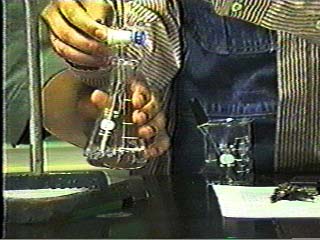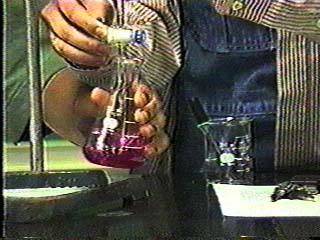
Acid-Base Titration |
Purpose:
Materials:
Procedure:
Data &
Information
| Titration #1 | |
| Volume HCl used | 20 mL |
| Concentration HCL used | 1M |
| Volume NaOH used | mL |
| Concentration NaOH used | M |
| Titration #2 | |
| Volume HCl used | 20 mL |
| Concentration HCL used | M |
| Volume NaOH used | mL |
| Concentration NaOH used | M |
Questions:

| Acid Base Titration | |
|---|---|
| Step #1 | Step #2 |
 |
 |
| Step #3 | |
 |
|